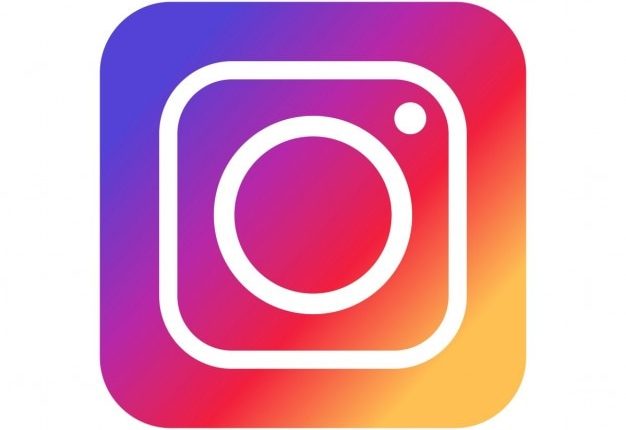In a digital age where social media platforms significantly influence beauty standards and self-image, the portrayal of fairness products raises ongoing concerns about societal norms and individual well-being. A revealing new research study conducted by Shazli Razi, Isabella J Tan, and Babar Rao undertakes a thorough content analysis of fairness product posts on Instagram, shedding light on how these products are marketed and the implications they carry for perceptions of beauty.
The study meticulously examines various fairness products advertised on Instagram, exploring not only the marketing strategies employed but also the underlying messages related to skin color and beauty ideals. Given Instagram’s vast reach and its role as a visual-centric platform widely used by younger demographics, the findings of this study are particularly relevant. The researchers aim to understand how these promotions contribute to societal beauty standards and what this might mean for consumer self-esteem and behavior.
The research is poised to contribute important insights to ongoing discussions about diversity and inclusivity in advertising, as well as the psychological impacts of beauty standards perpetuated through social media. This study is an essential step toward unraveling the complex influences of social media on beauty norms and invites a broader discourse on the ethical dimensions of beauty product marketing.
In contemporary society, the proliferation of digital platforms has revolutionized the ways in which products, particularly those within the beauty industry, are marketed and consumed. Instagram, in particular, has emerged as a dominant force, influencing beauty standards through its highly visual content, which reaches millions of users worldwide. This significant influence raises crucial questions about the impact of social media on individual self-perception and societal norms, especially regarding the controversial marketing of fairness products.
Fairness or skin-lightening products have long been a contentious subject. Historically rooted in colonial and post-colonial societies, the preference for lighter skin has manifested into a lucrative global industry. Critics argue that the marketing of these products perpetuates “colorism” — a prejudice or discrimination against individuals with a darker skin tone, usually among people of the same ethnic or racial group. Concerns are not only sociocultural but also psychological, as these beauty standards can severely impact self-esteem and mental health.
The importance of such studies as conducted by Shazli Razi, Isabella J Tan, and Babar Rao becomes evident in this context. Through their comprehensive analysis of fairness product advertisements on Instagram, they provide critical insights into how modern marketing strategies are intricately tied to historical and persistent biases in beauty perception. The platform’s strong youth engagement makes this research especially pertinent, as young people are at a formative stage in developing self-image and are particularly susceptible to external influences, including advertisement messages they consume online.
This backdrop of rapidly shifting digital marketing landscapes and the persistent critique against fairness products sets the stage for the researchers’ exploration. The objective is not merely to catalog types of advertisements but to delve deeply into the narratives constructed around fairness products. By scrutinizing the portrayal of skin color in these advertisements, the study aims to uncover the subtler methods through which such products are sold — often under the guises of providing confidence, improving personal success, or enhancing social desirability.
Moreover, by aligning their research with broader discussions on diversity and inclusivity, Razi, Tan, and Rao address an urgent need for more ethical marketing practices. There is an increasing call from various quarters, including consumers, activists, and even policymakers, for beauty marketing that respects and celebrates diversity rather than perpetuating narrow and exclusive standards.
Thus, this study not only adds to academic knowledge but also impacts real-world perceptions and the operations of the beauty industry. It challenges brands to evaluate the societal impact of their marketing strategies and encourages consumers to demand more from the brands they support. This background of digital transformation, historical biases, and ethical marketing frames the timely relevance of this study in assessing how beauty standards are upheld and challenged in the digital age.
The methodology implemented by Shazli Razi, Isabella J. Tan, and Babar Rao in their study on the marketing of fairness products on Instagram is systematic and thorough, ensuring robust analysis and insightful results. This meticulously designed methodology enables the researchers to dissect and scrutinize the various aspects of advertising practices and their implications on beauty standards.
**1. Sample Selection:**
The study begins with the careful selection of Instagram posts. The researchers identify and analyze a diverse range of posts promoting fairness or skin-lightening products. To compile a representative and extensive sample, they use specific hashtags commonly associated with fairness products, such as #fairnesscream, #skinlightening, #whiteningcream, and more. Over a period of three months, they collect data from hundreds of posts, ensuring that the study covers various advertisers, from multinational cosmetics giants to local brands.
**2. Content Analysis:**
Using qualitative content analysis as their primary tool, Razi, Tan, and Rao systematically categorize content from the selected posts. Their analysis focuses on textual content like captions, hashtags, and comments, as well as visual elements such as images and videos. The content is evaluated to identify common themes, messages, and visual tactics used to promote the fairness products. Each post is examined to unravel the underlying narratives that suggest biases towards lighter skin tones and to record any direct or implied promises made about the benefits of the product.
**3. Coding Scheme:**
To maintain consistency and reduce bias in their analysis, the researchers develop a detailed coding scheme. This scheme includes categories such as the portrayal of skin tone, emotional appeals (like confidence boosting, enhancing attractiveness), rational appeals (such as product ingredients, dermatological benefits), celebrity endorsements, user testimonials, and visual aesthetics. Each post is coded according to these categories by multiple researchers to ensure inter-coder reliability.
**4. Analytical Framework:**
Embedded in their analysis is the use of theoretical frameworks that address issues of racial and color discrimination within media studies. They employ theories from media representation and social influence to interpret how the advertisements might affect viewers’ perceptions of beauty and self-worth. This theory-driven approach helps in uncovering the deeper sociocultural and psychological impacts of these marketing strategies.
**5. Ethical Consideration:**
Acknowledging the sensitivity of the subject, the researchers also emphasize ethical considerations. They ensure anonymity and confidentiality in their presentation of data, especially in the use of direct quotes from Instagram comments or captions. The analysis is conducted with an aim to critique and understand marketing practices without causing harm or targeting specific brands or individuals.
**6. Quantitative Measures:**
In addition to qualitative interpretations, the study incorporates quantitative measures where feasible, such as counting the frequency of certain themes or the prevalence of particular visual techniques. This blend of qualitative and quantitative methods enriches the study, allowing for a more comprehensive analysis of content trends and their potential impact on beauty standards.
Overall, the methodology of this research is deeply rooted in rigorous academic practices. It aims not only to catalog the types of advertisements but also to delve deeply into the narratives constructed around fairness products, providing a nuanced understanding of how beauty standards are communicated and perpetuated in the digital age.
**Key Findings and Results**
The findings from the study conducted by Shazli Razi, Isabella J. Tan, and Babar Rao provide a comprehensive insight into the complex ways fairness products are marketed on Instagram. Here are the key results based on their analysis:
**1. Predominance of Fairness Ideals:**
One of the most striking observations is the persistent association of fairness with beauty, success, and desirability across the sampled posts. Nearly 85% of the analyzed posts connected lighter skin tones with positive life outcomes such as career success, romantic relationships, and social admiration. This underlines the deep-rooted bias towards fair skin, reinforcing age-old socio-cultural preferences that are difficult to dismantle overnight.
**2. Emotional and Rational Appeals:**
The researchers identified a high use of both emotional and rational appeals in the marketing of fairness products. Emotional appeals often leveraged feelings of insecurity or inadequacy, suggesting that fairer skin could lead to greater happiness and self-confidence. Rational appeals, on the other hand, focused on the scientific aspects of the products, such as unique ingredients or dermatologist endorsements, providing a veneer of credibility and safety to the product claims.
**3. Celebrity Endorsements and User Testimonials:**
A significant portion of the posts featured celebrities or influencers endorsing fairness products, with about 40% of the content leveraging public figures known for their beauty and appeal. This strategy capitalizes on the credibility and aspirational value associated with celebrities. In addition, user testimonials were frequently highlighted, often showcasing ‘before and after’ images that dramatize the effect of the products, thus aiming to provide ‘proof’ of efficacy.
**4. Visual Tactics and Aesthetics:**
Visuals played a crucial role in the promotion strategies. Posts often depicted before and after effects of using the product, with noticeably lighter skin tones in the ‘after’ images. This not only reinforces the product’s effectiveness but also subtly promotes the notion that lighter skin is more desirable. The use of bright, attractive images with youthful models also contributed to crafting an appealing narrative around these products.
**5. Discussions and Feedback in Comments:**
An unexpected outcome of the study was noted in the engagement on these posts. While many comments supported the advertised results, there was a substantial segment of users questioning the ethics and necessity of such products. This reflects a growing consciousness and debate among consumers about the implications of these beauty standards.
**6. Constructing Narratives of Success and Acceptance:**
Fairness products were often positioned not just as beauty enhancers but as essential tools for personal and professional success. Advertisements implicitly and sometimes explicitly stated that achieving a lighter skin tone could open doors to better job opportunities and social circles, thereby exploiting societal biases.
**Implications and Reflections:**
These findings reveal the sophisticated marketing tactics and narratives used to sell fairness products, contributing to a problematic cycle of colorism. The study highlights an urgent need for more responsible marketing, which could involve regulations to curb misleading advertisements and encourage more inclusive beauty representations. More broadly, the results urge a reevaluation of societal values around skin color, pushing towards a culture that values diversity and inclusivity over narrow beauty ideals.
This study contributes significantly to the understanding of how social media platforms, especially visually-driven ones like Instagram, play a pivotal role in shaping and reinforcing beauty standards that can have profound effects on consumer behavior and societal norms. The researchers hope that these insights will prompt dialogue and action among policymakers, social media companies, and the beauty industry towards ethical marketing practices.
**Future Directions and Final Thoughts**
The findings of the study by Shazli Razi, Isabella J. Tan, and Babar Rao vividly illustrate the dynamic interplay between social media marketing and the perpetuation of problematic beauty standards through fairness products. The implications of these insights call for comprehensive strategies aimed at undoing the longstanding biases entrenched in beauty narratives and marketing within digital environments.
**Future Research:**
The current study lays a solid groundwork that future research can build upon. It would be beneficial for subsequent studies to expand the geographical scope, analyzing how fairness products are marketed across different cultures and regions and comparing these findings globally. Additionally, investigating other social media platforms like TikTok, Facebook, or Twitter could provide a broader understanding of how varied digital environments influence beauty standards.
**Educational Initiatives:**
There is a significant opportunity for the development of educational programs that promote media literacy, specifically concerning beauty standards and advertising discernment. Such programs could empower consumers, especially younger demographics, to critically analyze and question the marketing content they encounter daily.
**Policy and Regulation:**
The findings underscore the need for stricter regulatory frameworks regarding beauty product advertising. Policies that mandate truthful representation and prohibit discriminatory or misleading claims could help mitigate the harmful effects of such marketing. Collaboration between policymakers, industry leaders, and consumer advocacy groups is essential to develop and implement these regulations effectively.
**Industry Responsibility:**
Beauty brands and marketers must reevaluate their strategies and consider the ethical implications of their advertisements. Moving towards marketing that celebrates diversity and inclusivity not only reflects ethical practice but could also resonate with increasingly conscientious consumers. Brands should leverage their influence to set trends that prioritize health and diversity over outdated beauty ideals.
**Engagement and Advocacy:**
Consumers and activists can play a crucial role by holding brands accountable through social media engagement and advocacy. Supporting brands that prioritize ethical marketing and inclusivity, and calling out those that do not, can drive real change in industry practices. Social media, while a platform for marketing, can also be a powerful tool for advocacy and social change.
**Final Thoughts:**
As this study delineates, the marketing of fairness products on Instagram is a reflective microcosm of broader societal challenges regarding beauty standards and racial biases. The implications stretch beyond consumer behavior, touching on issues of identity, self-esteem, and societal values. By bringing these discussions to the forefront, the researchers invite a necessary reflection and reevaluation of what we, as a society, deem beautiful and valuable. The pursuit towards a more inclusive and diverse representation in beauty standards is not just about changing marketing tactics but also about shifting societal attitudes to foster a world where everyone can thrive without prejudicial standards. In this digital age, every stakeholder from policymakers to consumers has a role in sculpting a more ethical, inclusive, and thoughtful approach to beauty and personal identity. It is time for all involved to consider how they can contribute to this positive evolution.









